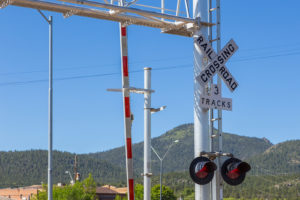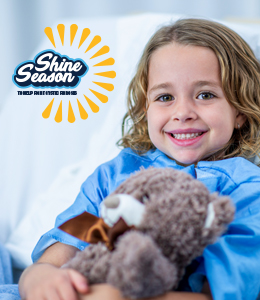Railroad Crossing Safety Tips for Drivers
August 26th, 2020 by Fix Auto USA

Almost every driver has to apply the brakes at the last moment to avoid hitting an animal or other car. Unless you’re driving fast speed, bringing a small or medium-sized vehicle to a complete stop is pretty straightforward. However, It takes longer and more oomph to get big, heavy vehicles like SUVs and trucks to an unexpected stop.
Imagine, then, how long it must take to stop the momentum of a freight train. The average freight train takes over a mile to stop in emergency braking. The last thing you want to be doing is driving on train track. If a locomotive engineer detects a car on the tracks up ahead, he will sound the horn and apply his emergency brakes. But he may not have enough time to bring the train to a complete stop and to avoid a collision.
Here’s what the data tell us about railroad crossing safety. In the U.S., every four hours an individual or vehicle is hit by a train typically at a grade crossing. In 2018 nearly 100 people died as a result of a driver trying to get around a lowered gate at a railroad crossing.
According to the National Safety Council, most of these fatalities result from human error and are preventable. Here are five railroad crossing safety tips for drivers; following them when approaching a railroad crossing can help you and your loved ones stay out of harm’s way.
1. Reduce your speed and yield when approaching a railroad crossing.
One big no-no is trying to outrace a train. That’s just not going to end well. Always yield the right of way to the train – that’s the law – and make sure you bring your car to a complete stop at least 15 feet from the crossing.
2. Never stop your car on the tracks.
This is Railroad Crossing Safety 101. If the worst-case scenario happens and you are trapped on the tracks while a train is heading your way, get everyone out of the car as quickly as possible to safer ground, and contact 911.
If you drive a stick-shift, take extra precautions. The actual crossing is often several inches above the street level; if you shift gears while trying to proceed, your car could stall on the tracks.
3. Be vigilant
When approaching a railroad crossing, be hyper-aware of your surroundings. Be on the lookout for trains, of course, but also pedestrians and joggers. Engine noise can make it difficult to hear an approaching train that is sounding its locomotive horn.
Note that some crossings include two or three tracks. Why is this important? Once a train crosses, don’t assume it is okay to proceed, as there could be another train coming on the second track or third track. Having a heightened awareness can save your life.
4. Report problems
Most, but not all crossings, include a sign with instructions on what to do if the gate at the railroad crossing is not working properly or an object is on the tracks. Look for the toll-free number listed on the sign and call it right away so the authorities are aware of the problem.
5. Don’t be fooled
Depending on the angle, trains may look like they’re much farther away and moving slower than they actually are. Don’t misjudge them. They’re moving faster than you think.
Again, most collisions and fatalities that happen at railroad crossings are preventable if drivers are patient, hyper-aware of their surroundings, and exercise care and caution when approaching a railroad crossing.
We hope you take a moment to share these railroad crossing safety tips for drivers with your friends and family.
Be careful out there!
This blog post was contributed by Fix Auto The Dalles, a leading industry expert and collision repair shop servicing Wasco County.
Welcome to
Fix Auto USA
We are the premier independent body shop network delivering world-class customer service and high-quality collision repairs across the U.S.
Learn About Us





